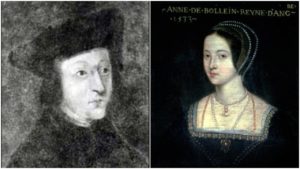 On this day in history, King Henry VIII, Thomas Cromwell and the Boleyns scored a bit of a victory over Eustace Chapuys, the man who represented Charles V, Holy Roman Emperor, at the English court. They manoeuvred the ambassador into a position where he was forced to pay reverence to Queen Anne Boleyn, thereby acknowledging her as queen, something which he had not done before.
On this day in history, King Henry VIII, Thomas Cromwell and the Boleyns scored a bit of a victory over Eustace Chapuys, the man who represented Charles V, Holy Roman Emperor, at the English court. They manoeuvred the ambassador into a position where he was forced to pay reverence to Queen Anne Boleyn, thereby acknowledging her as queen, something which he had not done before.
Chapuys had just turned down an invitation from the king to “go and visit and kiss the Concubine”, the Concubine being Anne, so Lord Rochford, the queen’s brother, conducted the ambassador to mass and managed to position the ambassador behind the door by which Anne would enter. As she came through the door, Anne, knowing full well that the ambassador had been placed there, turned to him and bowed, forcing Chapuys to do the same to her. Clever!
You can read more about what happened in my article from 2016 – click here to read it now.